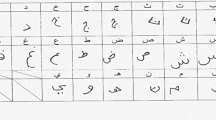Abstract
The purpose of this research paper is to introduce a new graphical password system that combines the strengths of traditional passwords, such as flexibility, with the benefits of graphical passwords, such as ease of use, memory retention, and security. The new system is based on drawing rather than selecting images, and it uses deep learning models to classify the drawn images. To improve network performance in terms of storage and data required to send, a new method called “selected pixels (SP)” has been proposed. This method sends only the color pixels of the drawing images rather than the whole image. The proposed system is a highly flexible platform that can be easily integrated into any e-commerce ecosystem. It is specifically designed to accept Arabic digits, but it is not limited to this type of input. The system can be adapted to accept other types of digits, characters, or even objects. The proposed system has been evaluated using login time, the total amount of data required to send and store, and password entropy. The results of the evaluation show that the new system outperforms traditional graphical password systems in terms of all the evaluated metrics. Therefore, the proposed system has significant potential to be used as a new and effective graphical password system.





Similar content being viewed by others
References
Abdleazeem S, El-Sherif Ezzat (2008) Arabic handwritten digit recognition. Int J Doc Anal Recogn IJDAR 11:127–141
Aloysius N, Geetha M (2017) A review on deep convolutional neural networks. In: 2017 international conference on communication and signal processing (ICCSP). IEEE, pp. 0588–0592
Andriotis P, Kirby M, Takasu A (2022) Bu-dash: a universal and dynamic graphical password scheme. In: HCI for Cybersecurity, Privacy and Trust: 4th International Conference, HCI-CPT 2022, Held as Part of the 24th HCI International Conference, HCII 2022, Virtual Event, June 26–July 1, 2022, Proceedings. Springer, pp 209–227
Bhanushali A, Mange B, Vyas H, Bhanushali H, Bhogle P (2015) Comparison of graphical password authentication techniques. Int J Comput Appl 116(1):96
Gokhale MAS, Waghmare VS (2016) The shoulder surfing resistant graphical password authentication technique. Procedia Comput Sci 79:490–498
Islam A, Por LY, Othman F, Ku CS (2019) A review on recognition-based graphical password techniques. In: Computational Science and Technology: 5th ICCST 2018, Kota Kinabalu, Malaysia, 29-30 August 2018, pp 503–512
Jirjees SW, Mahmood AM, Nasser AR (2022) Passnumbers: an approach of graphical password authentication based on grid selection. IJSSE 12(1):21–29
Kayem Anne VDM (2016) Graphical passwords—a discussion. In: 2016 30th International Conference on Advanced Information Networking and Applications Workshops (WAINA). IEEE, pp 596–600
Khodadadi T, Javadianasl Y, Rabiei F, Alizadeh M, Zamani M, Chaeikar SS (2021) A novel graphical password authentication scheme with improved usability. In: 2021 4th International Symposium on Advanced Electrical and Communication Technologies (ISAECT). IEEE, pp 01–04
Kulkarni TR, Dushyanth ND (2021) Performance evaluation of deep learning models in detection of different types of arrhythmia using photo plethysmography signals. Int J Inf Technol 13:2209–2214
Matta P, Pant B (2020) TCPC: a graphical password scheme ensuring authentication for IOT resources. Int J Inf Technol 12:699–709
Meng W, Zhu L, Li W, Han J, Li Y (2019) Enhancing the security of fintech applications with map-based graphical password authentication. Future Gener Comput Syst 101:1018–1027
Orunsolu AA et al (2022) An efficient and secured graphical authentication system. Acta Inform Malays (AIM) 6(1):17–21
Pang G, Shen C, Cao L, Van Den Hengel A (2021) Deep learning for anomaly detection: a review. ACM Comput Surv (CSUR) 54(2):1–38
Rani Geeta, Pandey Upasana, Wagde Aniket Anil, Dhaka Vijaypal Singh (2023) A deep reinforcement learning technique for bug detection in video games. Int J Inf Technol 15(1):355–367
Singh UP, Chouhan SS, Jain S (2020) Images as graphical password: verification and analysis using non-regular low-density parity check coding. Int J Inform Technol. https://doi.org/10.1007/s41870-020-00477-x
Voulodimos A, Doulamis N, Doulamis A, Protopapadakis E et al (2018) Deep learning for computer vision: a brief review. Comput Intell Neurosci. https://doi.org/10.1155/2018/7068349
Wang Z, Liao L, Meng R, Yang C-N, Zhou Z, Yang H (2022) Verification grid and map slipping based graphical password against shoulder-surfing attacks. Secur Commun Netw. https://doi.org/10.1155/2022/6778755
Warnecke A, Arp D, Wressnegger C, Rieck K (2020) Evaluating explanation methods for deep learning in security. In: 2020 IEEE European symposium on security and privacy (EuroS &P). IEEE, pp 158–174
Yang G-C (2017) Passpositions: a secure and user-friendly graphical password scheme. In: 2017 4th International Conference on Computer Applications and Information Processing Technology (CAIPT). IEEE, 1–5
Author information
Authors and Affiliations
Corresponding author
Ethics declarations
Conflict of interest
“We declare that we have no conflicts of interest related to this research. The study was conducted without any external influence from personal, financial, or professional relationships that could potentially bias the data or the interpretation of the results. We have no financial, personal or other relationships with individuals or organizations that could inappropriately influence our work.”
Rights and permissions
Springer Nature or its licensor (e.g. a society or other partner) holds exclusive rights to this article under a publishing agreement with the author(s) or other rightsholder(s); author self-archiving of the accepted manuscript version of this article is solely governed by the terms of such publishing agreement and applicable law.
About this article
Cite this article
Rasheed, A.F., Zarkoosh, M. & Elia, F.R. Enhancing graphical password authentication system with deep learning-based arabic digit recognition. Int. j. inf. tecnol. 16, 1419–1427 (2024). https://doi.org/10.1007/s41870-023-01561-8
Received:
Accepted:
Published:
Issue Date:
DOI: https://doi.org/10.1007/s41870-023-01561-8




